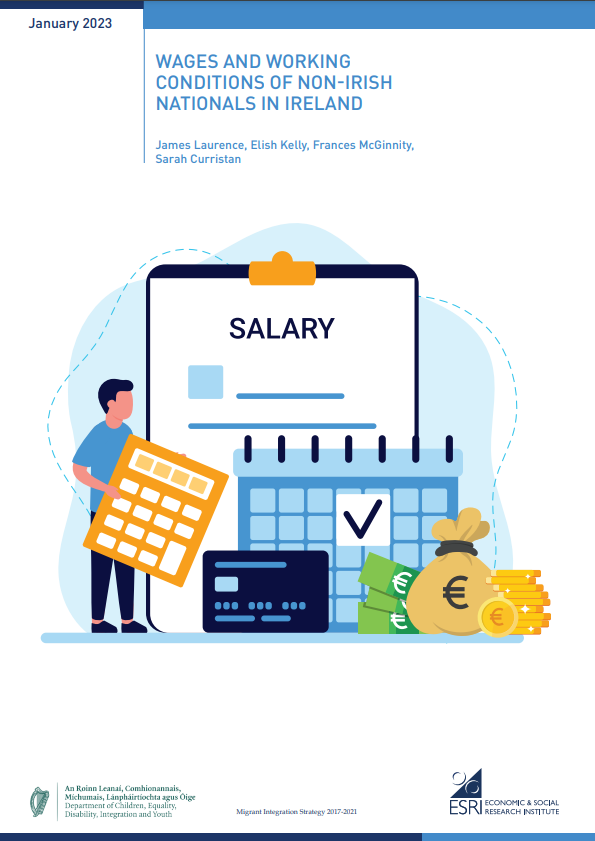Migrants make a significant contribution to Ireland and its economy, and increasingly form a key portion of the Irish workforce. For migrants, jobs are an important source of income, and their integration into a country’s labour market is a key indicator of their broader social integration into society. However, international research finds significant inequalities in migrants’ employment
experiences; in particular, that migrants often experience lower earnings than nonmigrants (known as the ‘migrant wage gap’) and tend to be over-concentrated in jobs with poorer working conditions.
This report uses high-quality Office of the Revenue Commissioners administrative data on wages matched to the Central Statistics Office’s (CSO) Labour Force Survey (LFS) data on job characteristics and workers’ skills to investigate the earnings and working conditions of different non-Irish migrant groups and how these compare to Irish workers in the period 2011–2018. The main objective of the study is to explore whether non-Irish nationals face distinct employment outcomes, in terms of the quality of the jobs they work in and the wages they earn compared to Irish
nationals.
The report examines: i) what might drive any differences in earnings between Irish and non-Irish nationals; ii) whether there are differences in the migrant wage gap between men and women; iii) whether the migrant wage gap is larger or smaller for more or less educated non-Irish nationals; and iv) whether the size of the migrant wage gap has changed over time (i.e., between 2011–2013 and 2016–2018).
Key Findings
- Non-Irish nationals are generally more likely to be found in lower quality jobs. For example, they are less likely to work in professional/managerial occupations (33 per cent compared to 44 per cent of Irish nationals). Non-Irish nationals are much less likely to be members of trade unions or staff associations (13 per cent compared to 34 per cent for Irish nationals).
- A ‘migrant wage gap’ exists in Ireland. In the period 2011–2018, non-Irish nationals earned, on average, 22 per cent less per hour than Irish nationals – for every €1 an Irish worker earned, a non-Irish worker earned 78 cents.
- Yet earnings differ considerably depending on origin country. East Europeans earn 40 per cent less per hour than their Irish counterparts. Part of their wage gap can be explained by differences in their social and demographic characteristics (e.g., education level), the kinds of jobs that they do, and firms for which they work. However, even after we account for these differences in characteristics, East Europeans still earn 20.5 per cent less than Irish nationals.
- For other non-Irish groups, the gap is much smaller – especially those from West Europe, North America, Australia and Oceania. This is partly because they have higher educational qualifications, but they still get lower rewards for education than Irish workers.
- For African nationals their employment rates are very low, and when in work, they earn on average 14 per cent less than Irish nationals, after accounting for background and job characteristics.
- Non-Irish women experience a double earnings penalty: for being female and for being a migrant. Non-Irish women earn 11 per cent less than non-Irish men, who in turn earn 18 per cent less than Irish men. This means non-Irish women earn 30 per cent less than Irish men.
- The migrant wage gap narrowed over time, from 25.5 per cent in 2011–2013, to 18.7 per cent in 2016–2018, in part because the skill level of the non-Irish workers increased and because they are working in higher quality jobs. However, a significant 2.5 percentage point reduction in the wage gap over time remains even after we account for these changes in Irish and non-Irish characteristics.


